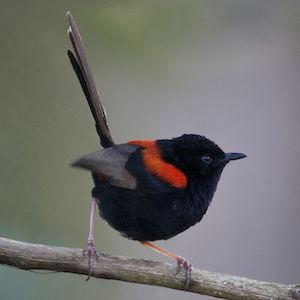Even birds know when they are paired up with a mate that is "out of their league." New research from the journal Biology Letters demonstrates that unattractive, male, red-backed fairy-wrens spend more time guarding their female mates – while their sexy competitors spend more time seeking "extramarital" affairs.
Red-backed fairy-wrens are Australian duetting songbirds, romantically chiriping back and forth like in a Disney cartoon. The birds are socially monogamous, which means one male and one female live and raise young together, but they do not necessarily mate exclusively. For this species, about 54% of hatchlings are the result of extra-pair paternity because the males are philanderers.
And just like humans, some male fairy-wrens are blessed with good looks. It was known previously that females find red-black plumage in males irresistible; brown plumage, on the other hand, is not very attractive.
In the current study, the researchers first observed the behavior of ugly (brown) and beautiful (red-black) males. When the females were receptive to mating, they noticed that the ugly birds spent more time at home, singing with their mate. On the contrary, the hotties spent less time with their mate, presumably because they were out hooking up with another female.
Then, the researchers simulated an intrusion by a philandering male by playing an audio recording of a male solo song. They also played recordings of a female solo song and of a duet. In all three circumstances, the ugly birds were far more likely to aggressively defend their mate. (See chart.)

Neither male sexual strategy (guarding or philandering) seemed to yield more offspring. In fact, the ugly brown males sired slightly more young than the attractive red-black males, though it was not quite statistically significant.
Even in nature, sometimes nice guys finish first.
Source: Jenélle Dowling and Michael S. Webster. "Working with what you've got: unattractive males show greater mate-guarding effort in a duetting songbird." Biol Lett 13 (1). Published: 11-January-2017.DOI: 10.1098/rsbl.2016.0682




